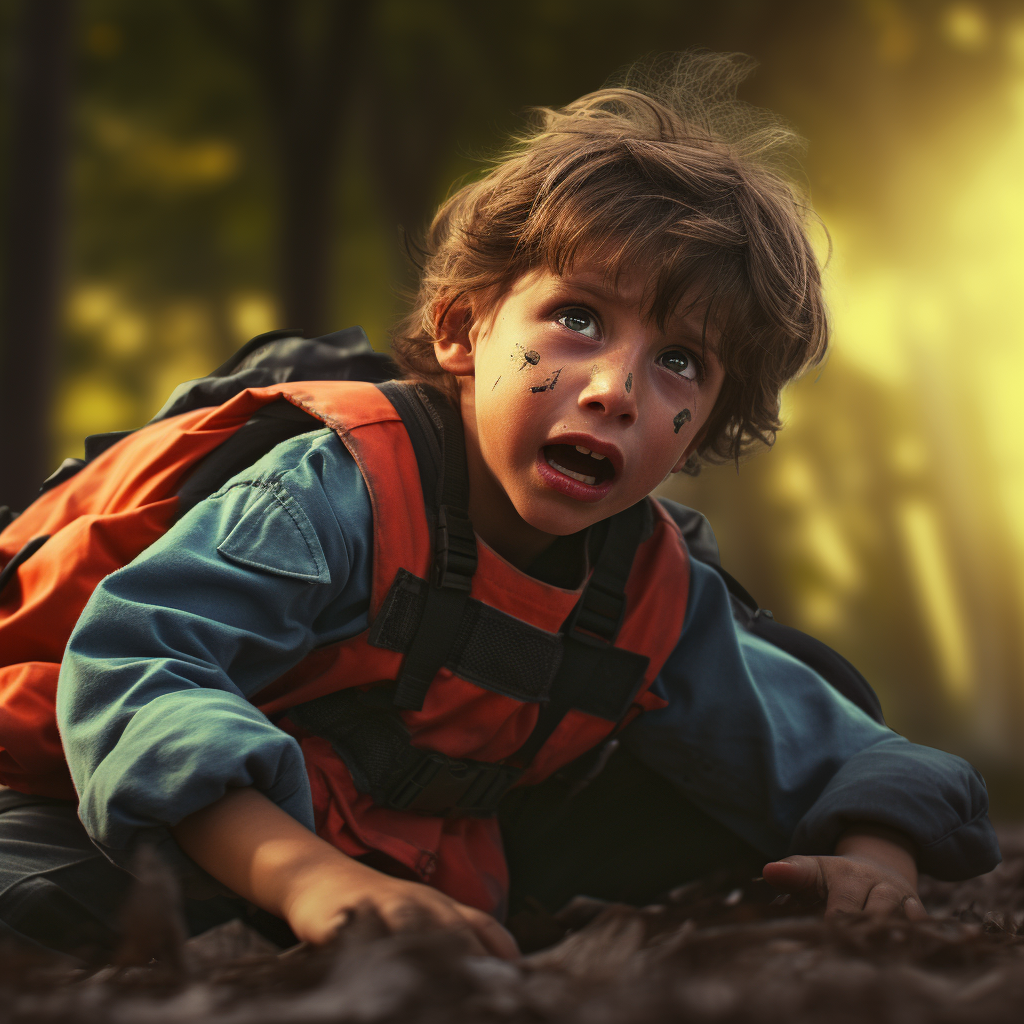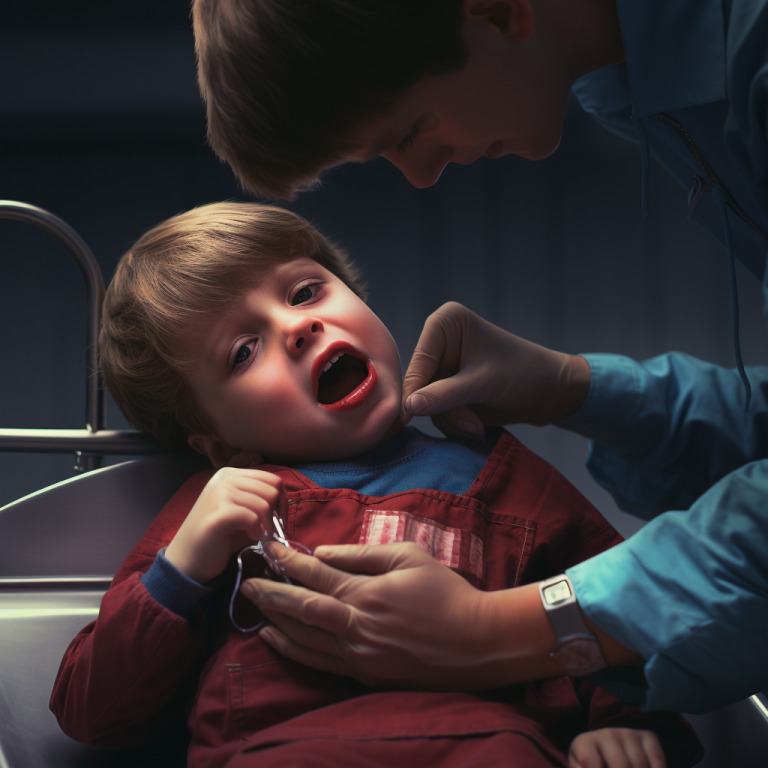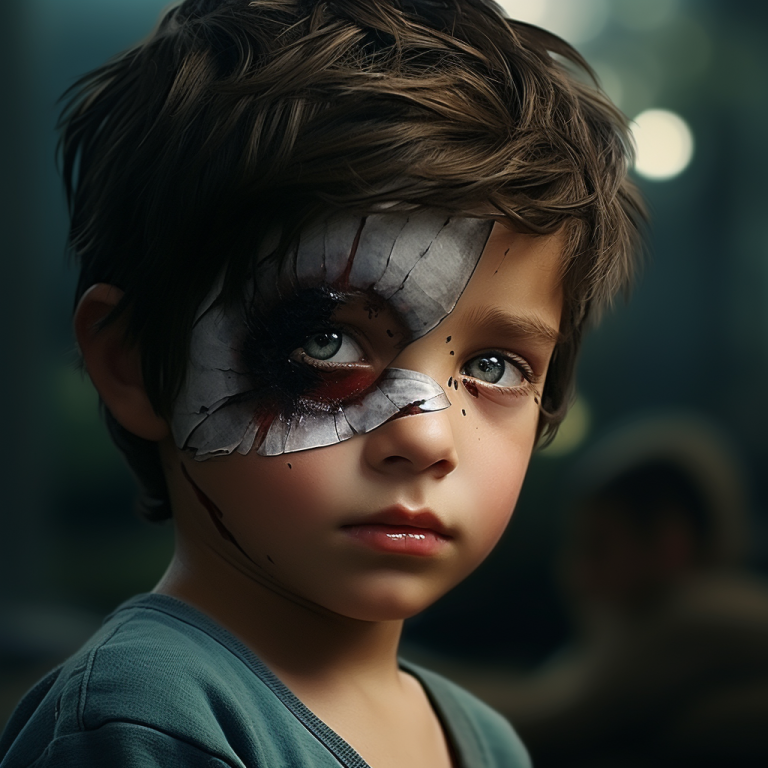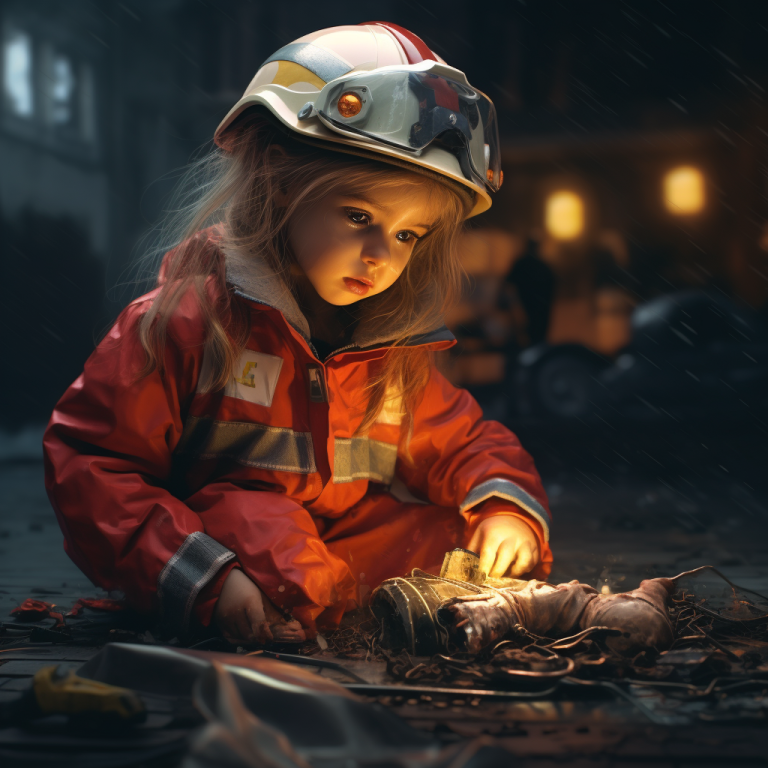Head Injuries
Injuries or falls involving the head pose a risk of brain injury.
Actions:
- In case of cardiac and respiratory arrest: Immediately start resuscitation and call emergency services (112).
- Lay the child flat—do not move them unnecessarily.
- Look at the clock to keep track of the duration of unconsciousness.
If the child is conscious:
- Ask the child simple questions and carefully observe their responses and reactions. Is their behavior normal, or are they acting unusually? Are both pupils the same size?
- Speak calmly to the child and explain your actions. In case of doubt, call emergency services (112).
Jaw/Teeth Injuries
Children often fall while playing, participating in sports, or engaging in other activities, which can result in dental trauma.
Immediate dental care is essential to prevent further damage. The upper front teeth are particularly at risk.
Injuries can vary (chipped teeth, enamel damage, or total tooth loss).
Actions:
- Stay calm and speak gently to the child.
- Try to look into the child’s mouth. If a tooth is loose, shifted, or pressed into the jaw, do not move or manipulate it; leave it as is.
- If a tooth or piece of tooth is missing, find the tooth fragment or tooth—do not clean or disinfect it. Never touch the tooth at the root.
- Place the tooth or fragment in a tooth-saving box with the child’s saliva or another isotonic solution (e.g., saline solution).
- Visit a dentist or the nearest dental clinic, or call emergency services (112).
If the teeth appear undamaged but were affected by the accident, visit a dentist immediately, as only a dentist can detect hidden injuries like root fractures and take steps to preserve the tooth.
Nosebleeds
Sometimes children experience nosebleeds without any injury, but it can also be the result of a blow or fall.
Actions:
- Stay calm and speak gently to the child.
- Keep the head straight or lean forward, and cool the nose with a damp cloth. Do not tilt the head back.
- Blood will flow into the throat, and the child might choke on it. Place a cold, damp cloth on the back of the neck.
- If the bleeding does not stop by itself or if there are other injuries, take the child to the nearest pediatrician or hospital or call emergency services (112).
Abdominal Injuries
An abdominal injury occurs due to blunt force trauma to the abdomen, for example, if the child falls onto the back of a chair.
Typically, no open wound is visible, but there may be small bruises, abrasions, or a contusion.
Actions:
- Stay calm and speak gently to the child.
- Ask about the accident details. The pain may have occurred some time after the injury.
- Lay the child flat and allow them to choose their position.
- Check if the child has visible injuries.
- Do not let the child eat or drink.
- If the abdomen is injured or the child shows signs of shock, seek medical attention immediately by going to the nearest pediatrician or hospital or calling emergency services (112).
Bruises
A bruise results from impact or collision. The consequences can be visible bruises in the skin or deeper bruising in the tissues.
Depending on where the injury occurs, swelling may not always be visible, such as in a concussion.
Sprain
A sprain occurs when the joint surfaces are compressed or shifted against each other. This causes swelling in the joint that restricts movement and causes pain.
Fracture
If the bone is displaced, it can press against the skin or even pierce through it. Children often can still move the affected limb despite the fracture.
Note:
Bruises, contusions, sprains, and fractures can only be distinguished from each other by a doctor.
Actions:
- Stay calm and speak gently to the child.
- If the injured area is constricted by clothing, remove it (e.g., rings from fingers, bracelets from arms, shoes from feet).
- Gently remove clothing from the injured area and inspect it closely.
- If bleeding occurs, cover the wound and apply a sterile dressing.
- If there is a noticeable deformity in the arm or leg, call emergency services (112).
- If there is no obvious deformity, cool the injured area to reduce swelling and bruising and alleviate pain.
- After the initial shock, recheck the injury.
- If the child experiences significant pain, apply a bandage carefully, but avoid unnecessary movement.
- If needed, visit a pediatrician or hospital, or call emergency services (112).
Dislocation
A dislocation occurs when a bone slips out of its joint, often causing the joint to appear unnaturally twisted.
Actions:
- Stay calm and reassure the child.
- Do not attempt to set the joint back into place; it may cause additional injury.
- Remove clothing around the injured area.
- Stabilize and support the dislocated area in a pain-free position (e.g., using a triangular bandage, pillow).
- Visit a pediatrician or hospital, or call emergency services (112).







